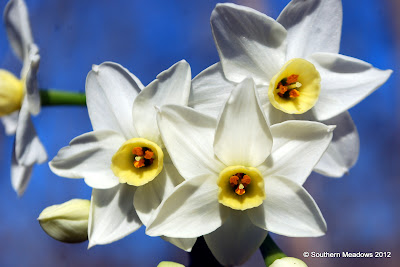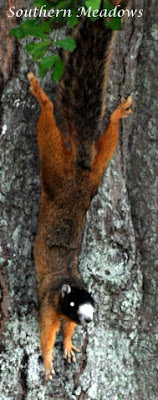Sunny Days and Winter Blooms
Winter is the time we replenish our water reserve in the southeast that gets drained quickly in spring, summer and fall. This month we have been making up for lost time in the rainfall department. But today the big yellow ball finally showed itself in a brilliant blue sky and the winter blooms were plentiful.
The hellebore are in their element at this time of year...
The hellebore are in their element at this time of year...
The Edgeworthia chrysantha 'Winter Gold' that I have been blogging about is finally starting to bloom.
Witch hazel is also beginning to show its streamers
Some early daffodils were out at the State Botanical Garden when I went to my Native Plants certification orientation.
And their Camellias' are way ahead of mine.
But the big news in gardening this week (well, other than the marriage of National Wildlife Federation and Scotts Miracle Gro) is that the USDA published their new plant hardiness zone map (click here to view). You can search by your zip code making it very user friendly. Has your zone changed? My zone moved from 7b to 8a. What does this mean for my garden? Well, our average annual minimum temperature has changed from 5 - 10 degrees to 10 - 15 degrees over the past few years.
So I now have a larger variety of plants to choose from and can include plants selectively that grow in zone 8. I certainly won't complain about that. It also means that my frost dates have moved and my growing season will be a little longer. My first frost date changed from April 15 to March 15 and last frost date from October 15 to November 15. While the zone is a good place to start in determining if a plant will survive in a particular area, exposure, moisture, snow fall and humidity also play an important factor.
Since my winter has now officially been cut shorter I'd better get started on my seeds because growing season will be here a little earlier this year.









.png)
